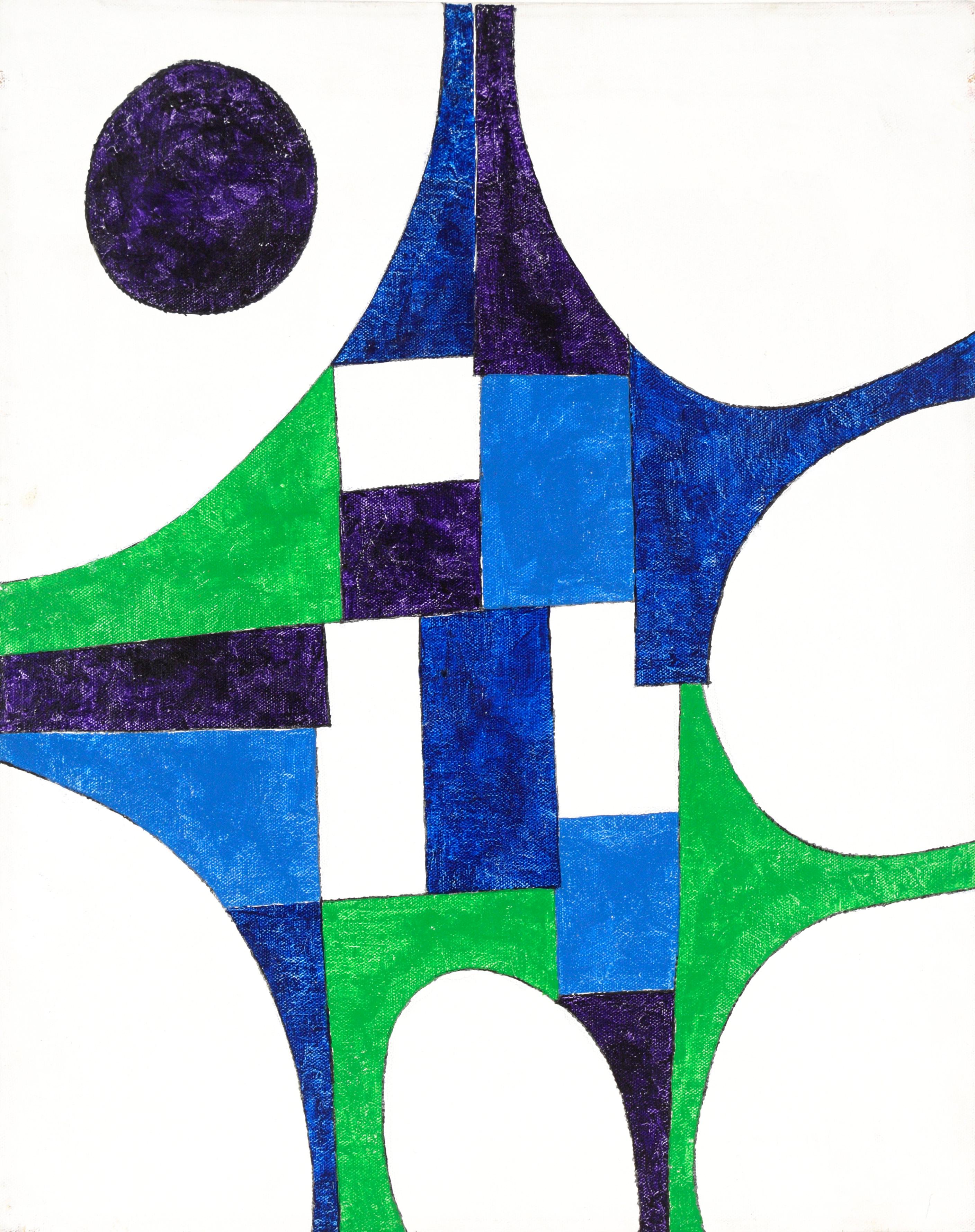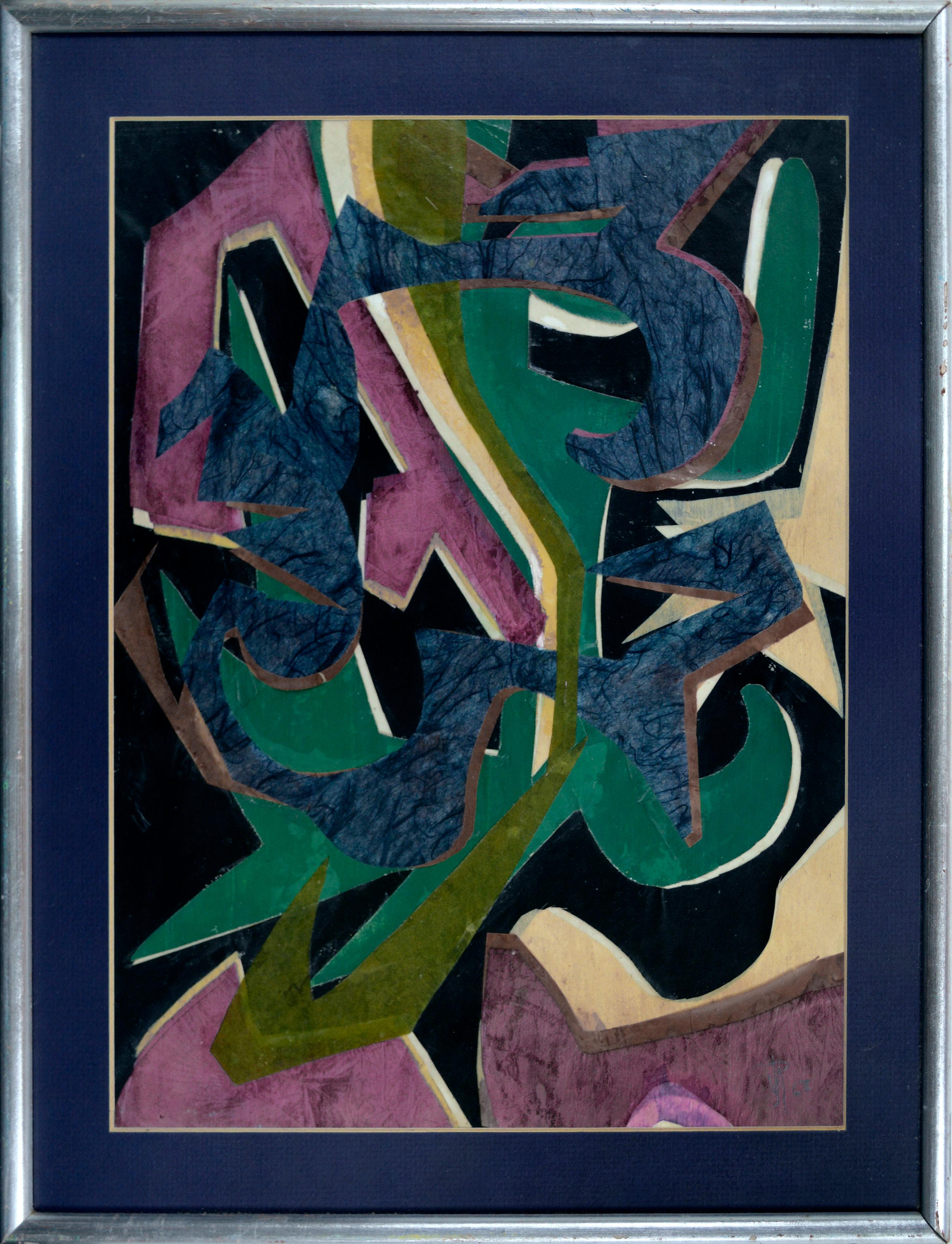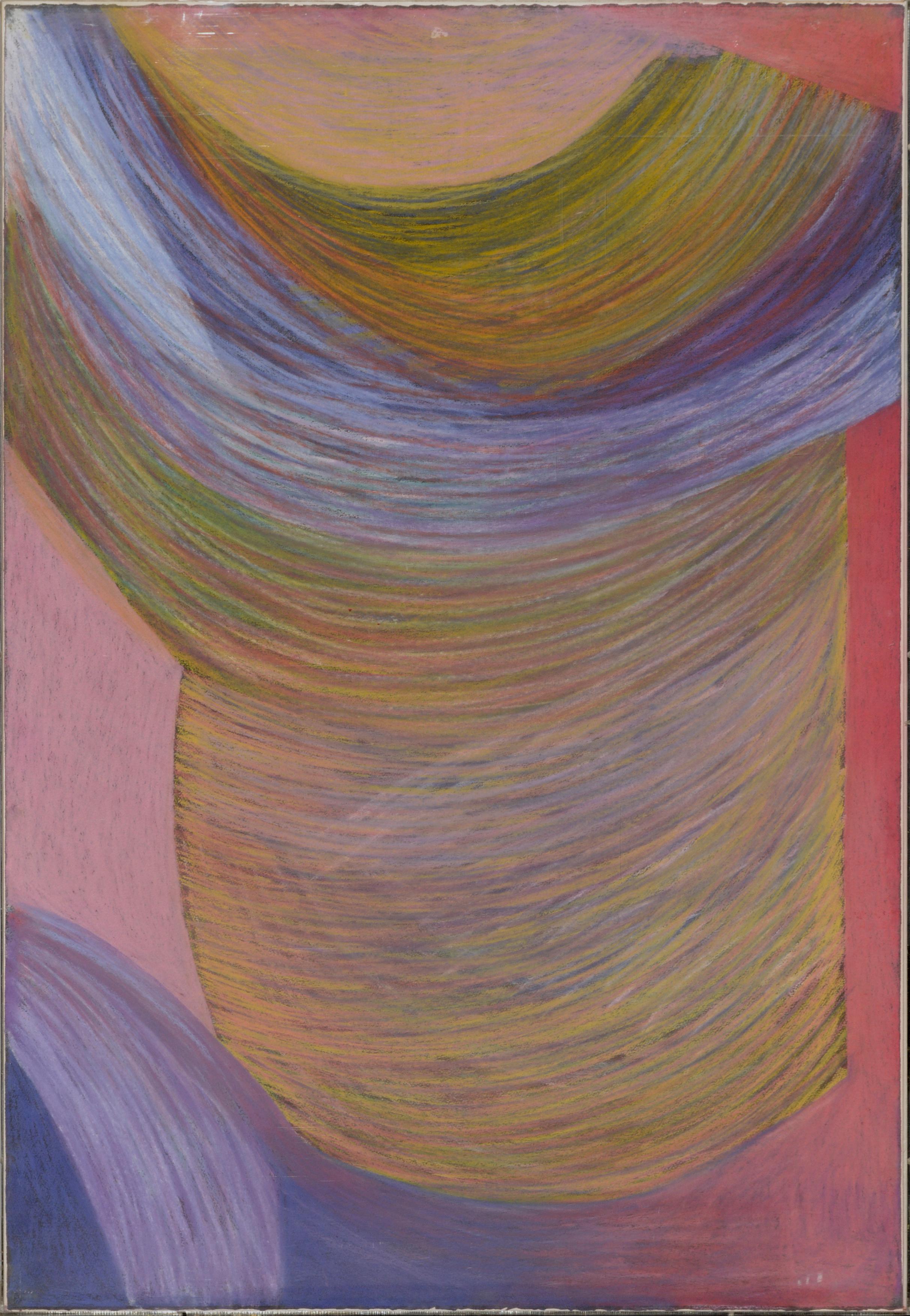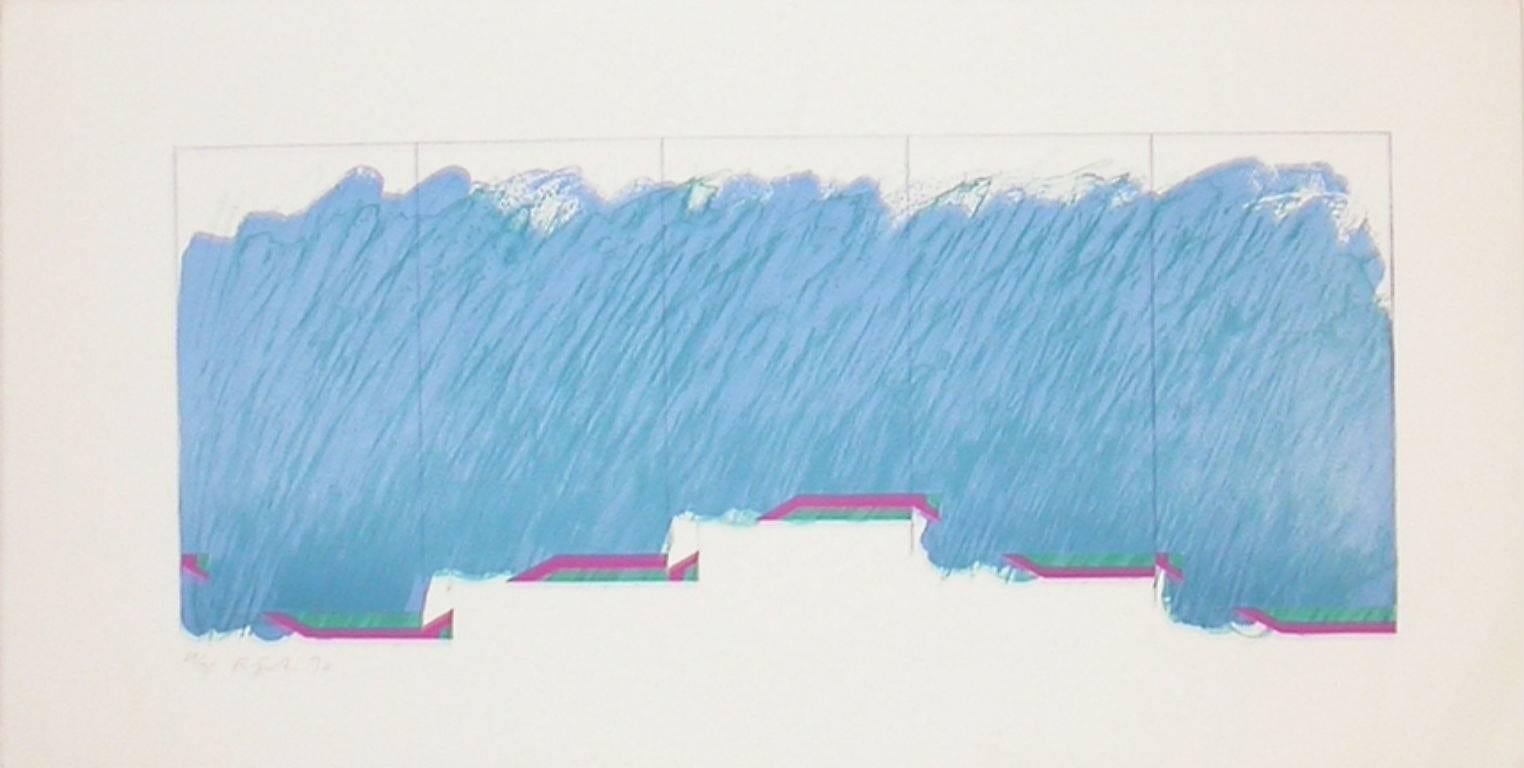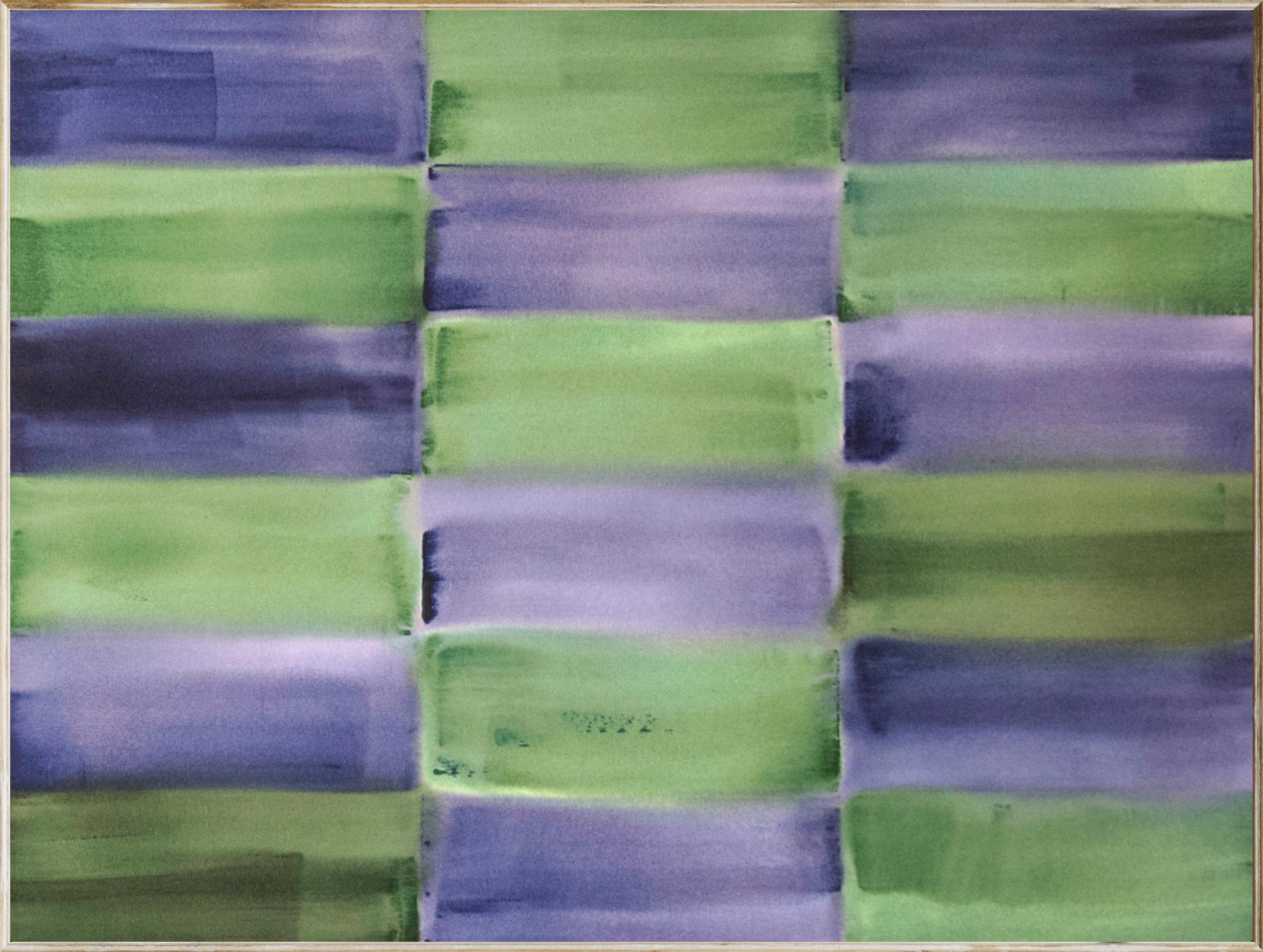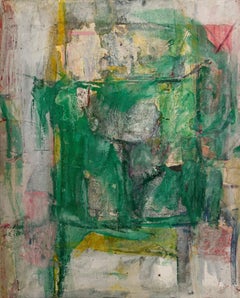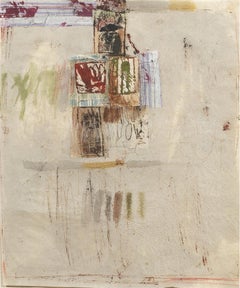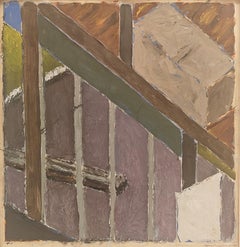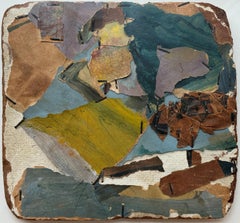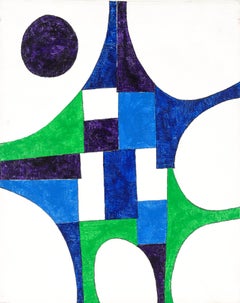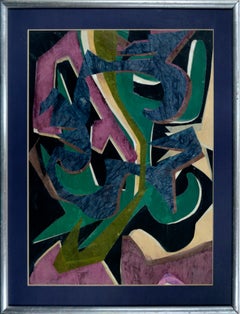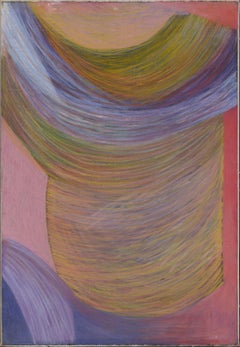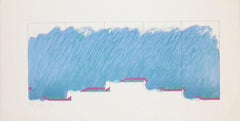Items Similar to "Untitled" Judith Rothschild, Abstract Relief, White, Purple, Green, Geometric
Want more images or videos?
Request additional images or videos from the seller
1 of 6
Judith Rothschild "Untitled" Judith Rothschild, Abstract Relief, White, Purple, Green, Geometric1975
1975
$6,000
£4,511.59
€5,216.79
CA$8,467.66
A$9,187.83
CHF 4,873.97
MX$112,825.87
NOK 60,275.23
SEK 57,080.57
DKK 38,941.14
About the Item
Judith Rothschild
Untitled, 1975
Signed lower left
Relief on board, acrylic case
16 7/8 x 40 x 2 inches
Provenance
The artist
Lee Ault & Company, New York
Annely Juda Fine Art, London
Exhibited
New York, Lee Ault & Company, Judith Rothschild: Relief Paintings, 1977.
Judith Rothschild (1921-1993), an exceptional colorist with a sharp sense of composition, achieved notable success as a young artist in New York during the 1940s. After completing her studies at Wellesley in 1943, Rothschild continued her education at the Art Students League under Reginald Marsh, at Stanley William Hayter’s Atelier 17, as well as with Hans Hofmann and Karl Knaths. Acknowledged as a talented and early abstract painter, she became part of the Jane Street group in 1945, which consisted of artists such as Leland Bell, Nell Blaine, Jane Freilicher, and Larry Rivers. Her inaugural solo show took place at the Jane Street Gallery in December 1945. Deeply entrenched in the principles of Cubism yet infused with the energy of an emerging artist, Rothschild’s paintings and collages maintain a vibrancy that resonates with current artistic trends and deserve a renewed exploration.
Rothschild was member and later president of the American Abstract Artists, serving as an editor for Leonardo magazine. She is widely recognized for her charitable foundation that supports artist estates in preserving their artwork and materials. Her creations are part of prestigious collections including the Metropolitan Museum of Art, the National Gallery of Art, The Museum of Modern Art, the San Francisco Museum of Modern Art, the Solomon R. Guggenheim Museum, the Whitney Museum of American Art, and the Philadelphia Museum of Art, among others.
- Creator:Judith Rothschild (1922 - 1993)
- Creation Year:1975
- Dimensions:Height: 16.875 in (42.87 cm)Width: 40 in (101.6 cm)Depth: 2 in (5.08 cm)
- More Editions & Sizes:Unique WorkPrice: $6,000
- Medium:
- Movement & Style:
- Period:
- Condition:
- Gallery Location:New York, NY
- Reference Number:1stDibs: LU1841216483192
About the Seller
5.0
Platinum Seller
Premium sellers with a 4.7+ rating and 24-hour response times
Established in 2022
1stDibs seller since 2022
122 sales on 1stDibs
Typical response time: <1 hour
- ShippingRetrieving quote...Shipping from: New York, NY
- Return Policy
Authenticity Guarantee
In the unlikely event there’s an issue with an item’s authenticity, contact us within 1 year for a full refund. DetailsMoney-Back Guarantee
If your item is not as described, is damaged in transit, or does not arrive, contact us within 7 days for a full refund. Details24-Hour Cancellation
You have a 24-hour grace period in which to reconsider your purchase, with no questions asked.Vetted Professional Sellers
Our world-class sellers must adhere to strict standards for service and quality, maintaining the integrity of our listings.Price-Match Guarantee
If you find that a seller listed the same item for a lower price elsewhere, we’ll match it.Trusted Global Delivery
Our best-in-class carrier network provides specialized shipping options worldwide, including custom delivery.More From This Seller
View All"Small Green Pale" Diana Kurz, Early 1960s Abstract Mixed Media Composition
By Diana Kurz
Located in New York, NY
Diana Kurz
Small Green Pale, circa 1960-61
Collage and mixed media on board
12 1/2 x 10 inches
Diana Kurz (born 1936) is an Austrian-born feminist painter. In 1938, Diana Kurz's fa...
Category
1960s Abstract Expressionist Mixed Media
Materials
Mixed Media, Board
"Untitled (C82-142)" Hannelore Baron, Mixed Media Collage, Abstract
By Hannelore Baron
Located in New York, NY
Hannelore Baron
Untitled (C82-142), 1982
Signed and dated on the reverse
Mixed media collage
Sheet 12 1/4 x 10 1/2 inches
Provenance:
Manny Silverman ...
Category
1980s Abstract Mixed Media
Materials
Fabric, Paper, Mixed Media, Laid Paper
"Untitled" Mernet Larsen, Abstract, Hard-Edged, Shades of Purple, Dark Colors
Located in New York, NY
Mernet Larsen
Untitled, 1988
Signed and dated lower right
Oil and collage on paper
Image 17 3/4 x 18 3/4 inches
Sheet 19 x 24 inches
For more than sixty years, Mernet Larsen has been making paintings that tell stories, showing sharp-edged, mysterious characters in a strange world full of tension and clever humor. She uses different ways to show space that sometimes don't match up. By mixing different perspectives, like reversed and traditional views, she turns everyday situations into a dizzying version of reality that feels familiar yet strange. Her influences come from many places, including geometric shapes from Russian Constructivism, Japanese Bunraku...
Category
1980s Abstract Geometric Abstract Drawings and Watercolors
Materials
Paper, Oil
"Untitled" John Chamberlain, Abstract Expressionist Collage, Fragmented Shapes
By John Chamberlain
Located in New York, NY
John Chamberlain
Untitled, 1960
Printed paper, staples, and mixed media on board
7 1/8 x 7 3/4 inches
Provenance
The artist
Gifted by the artist, circa 1960's
Private Collection, Ne...
Category
1960s Abstract Expressionist Mixed Media
Materials
Paper, Mixed Media, Board
"Untitled" Edward Zutrau, 1957 Blue And Green Abstract Expressionist Work
Located in New York, NY
Edward Zutrau
Untitled, 1957
Oil on linen
44 x 60 1/2 inches
Edward Zutrau is among the American artists who worked within the whirlwind of diverse abstraction that blossomed in th...
Category
1950s Abstract Expressionist Abstract Paintings
Materials
Linen, Oil
"Light White" Diana Kurz, 1960s Abstract Expressionist Subtle Color Composition
By Diana Kurz
Located in New York, NY
Diana Kurz
Light White
Pastel on Paper
14 x 11 inches
Diana Kurz (born 1936) is an Austrian-born feminist painter. In 1938, Diana Kurz's family fled Austria, first to England and t...
Category
1960s Abstract Expressionist Abstract Drawings and Watercolors
Materials
Paper, Pastel
You May Also Like
Abstract Geometric Composition in Green, Blue, White, and Purple
Located in Soquel, CA
Abstract Geometric Composition in Green, Blue, White, and Purple - Acrylic on Canvas
Bold abstract composition by Robert William Hinds (American, b. 1926). The central shape in this...
Category
1990s Contemporary Abstract Paintings
Materials
Canvas, Acrylic, Stretcher Bars
Mid Century Modern 1960s Abstract Geometric Collage w Navy Blue, Green & Purple
By Virginia Sevier Rogers
Located in Soquel, CA
Dynamic late 1960's mixed media abstract geometric collage, with mulberry paper cut into curved and angular shapes and adhered in layers, in a unique color palette of navy blue, dark...
Category
1960s Abstract Geometric Mixed Media
Materials
Mulberry Paper, Tissue Paper
"Untitled #2", Abstract Geometric Vertical Pastel with Purple & Green
By Renee Harwin
Located in Soquel, CA
Bold abstract composition with sweeping purple and green pastel tones in organic flowing forms, by Renee Harwin (Austrian, b. 1924). Tag on verso with name, date, title, and dimensions. Presented in a white plexiglass frame with plexiglass covering. Image size: 44.5"H x 31.75"W
As a young Viennese woman, Renee Harwin found her artistic development interrupted by Hitler's arrival to her city. Soon after, Renee and her family left and moved to the United States. Harwin says that while "one can drawn his or her own conclusions from my work, I believe that the tremendous impact of change from Nazism to free America has left deep impressions on me that are played out on these canvases."
Her work combines the influence of Midwest painters such as Clyfford Still and San Francisco Art Institute instructor Jack...
Category
1970s Abstract Geometric Abstract Drawings and Watercolors
Materials
Paper, Pastel
Horizon VI (blue, purple, green)
By Richard Smith
Located in London, GB
Edition of 75, Set of 6
33 x 71 cms (13 x 28 ins)
Category
1970s Abstract Abstract Prints
Materials
Lithograph
"Tilt" Abstract Geometric Oil on Wood Mixed Media Green White Modern
By Jean Feinberg
Located in Wellesley, MA
Tilt, 2017, Oil on Painted Plywood, 12 x 12 x 1 Inches. This painting is currently on view in a one-person exhibition of the artist's works at the Beth Urdang Gallery in Boston.
Jea...
Category
2010s Abstract Geometric Mixed Media
Materials
Mixed Media
Winter Solstice - purple and green grid, geometric abstract, acrylic on canvas
By Milly Ristvedt
Located in Bloomfield, ON
A Canadian artist created this abstract painting, its geometric pattern in green and indigo blue.
Milly Ristvedt’s masterful and intuitive use of color and geometric form are evide...
Category
1990s Contemporary Abstract Paintings
Materials
Canvas, Acrylic
